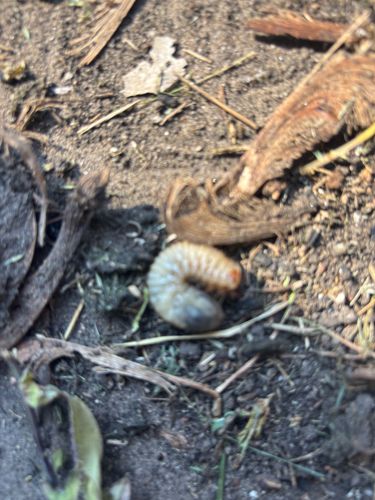Grub (Beetle Larva)
Scientific Name: Various species within Scarabaeidae (e.g., Phyllophaga spp., Popillia japonica)
Order & Family: Order: Coleoptera, Family: Scarabaeidae
Size: Typically 0.5 to 2 inches (1.25 to 5 cm) in length, depending on the species and developmental stage.

Natural Habitat
Underground in soil, especially in lawns, gardens, and agricultural fields. They prefer moist soil with a good supply of organic matter or plant roots.
Diet & Feeding
Primarily feed on the roots of grasses, ornamental plants, vegetables, and other crops. Some species may also consume decaying organic matter.
Behavior Patterns
Grubs are the larval stage of scarab beetles. They have a C-shaped body and live underground for one to several years, depending on the species. They are generally slow-moving. They undergo complete metamorphosis, pupating in the soil before emerging as adult beetles.
Risks & Benefits
Risks: Can be significant pests in lawns and gardens, causing damage by feeding on plant roots, leading to brown patches in lawns and stunted growth in plants. Benefits: Serve as a food source for various animals (birds, mammals, other insects). Their burrowing can also contribute to soil aeration, though this is often outweighed by their destructive feeding habits in cultivated areas.
Identified on: 10/16/2025